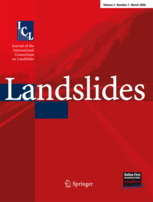Castelmola rockfall
LCI : ITA2105181230| Main Information | |
| Landslide Name | : Castelmola rockfall |
| Latitude | : 37:51:32 N |
| Longitude | : 15:16:41 E |
| Location | |
| City / District | : Castelmola |
| Province | : Messina |
| Country | : Italy |
| Reporter | |
| Reporter 1 | : Simone Mineo |
| Reporter 2 | : Giovanna Pappalardo |
| Landslide Type | |
| Material | : Rock |
| Movement | : Fall |
| Velocity (mm/sec) | : - |
| Depth (m) | : - |
| Slope (degree) | : - |
| Volume (m³) | : Very Small |
| Date of Occurence | |
| Date of Occurence | : Jan 05, 2019 |
| Other Information | |
| Land Use |
Source area : Urban area Run-out/deposition area : Urban area, Human settlement, Road |
| Other Activity | : Unknown |
| Triggering Factor | : Rainfall |
| Death(s) & Missing | : no |
| Houses and other structural damage | : roads |
| Photo of landslide | : - |
| Google earth kmz file | : Castelmola rockfall.kmz |
| Plan of landslide | : - |
| Cross section of landslide | : - |
| Reference (paper/report) | : A quick combined approach for the characterization of a cliff during a postrockfall emergency DOI 10.1007/s10346-019-01338-w |
| Testing graph | : - |
| Monitoring graph | : - |
| Video of moving landslides including 3D simulation | : - |
| Description | : |
In the early afternoon of 5 January 2019, an intense rainfall event triggered the detachment of a significant volume of fractured limestone and dolostone, which slid along a dip-slope plane towards the impact point of the 2016 event. This produced a 6 × 9 m large cavity under the main square of Castelmola village famous for its panoramic view towards Taormina and the Ionian coastline, as the fallen rock mass was its hard basement. The rockfall was composed of about 25 main blocks (average volumes between 0.1 and 5 m3) and numerous smaller rock volumes, which crossed the slope as far as the SP-10 road. In particular, three main runoff sectors can be identified: the first one is located right at the foot of the vertical cliff, where a change in the slope aspect characterizes the morphology. This is the point where the block movement turns from free-fall into rolling/rebounds. The greatest volumes proceeded downstream towards the other runoff sectors, i.e., a pedestrian pathway and the main SP-10 road. The rockfall deposit shows a sort of gradation of volumes, with greatest blocks traveling a longer distance as far as the SP-10. In fact, 24 blocks stopped along a 30-m long segment of PP, damaging the road pavement and the railing. Three main blocks reached the bus terminal and the SP-10, with volumes ranging between 1.3 and 5 m3. Only 1 block invaded the SP-10, leading to its temporary disruption. |
|




